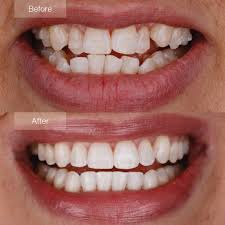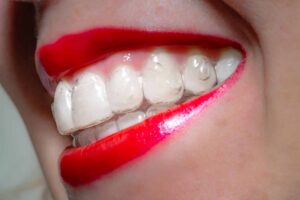Dental Bridges
Dental bridges are restorative dental devices used to replace one or more missing teeth by “bridging” the gap between them. They consist of one or more artificial teeth anchored in place by crowns on the adjacent natural teeth or dental implants. Bridges help restore the function of chewing and speaking, while also improving the appearance of the smile. They provide a durable, long-lasting solution for tooth loss, helping to maintain the structure and alignment of the surrounding teeth.
Why Choose Dental Bridges?
Here are four reasons to choose dental bridges:
Dental bridges restore the ability to chew and speak properly by filling the gap left by missing teeth, improving overall oral function.
By replacing missing teeth, bridges help maintain the natural alignment of the surrounding teeth, preventing them from shifting out of place, which can lead to bite problems.
Bridges improve the appearance of the smile by replacing missing teeth with natural-looking prosthetics, enhancing both confidence and aesthetics.
Made from strong materials like porcelain or metal, dental bridges offer a reliable and long-lasting solution, often lasting many years with proper care.
How Do Dental Crowns Work?
Consultation and Examination
The dentist begins with a thorough examination, including X-rays or scans, to assess the teeth and determine if a dental bridge is the best option. A personalized treatment plan is then created based on the patient's oral health needs.
Tooth Preparation
The teeth adjacent to the missing tooth (called abutment teeth) are prepared by removing a small portion of enamel to make room for the crowns that will support the bridge. Local anesthesia is typically used to ensure patient comfort.
Impression and Temporary Bridge
After the teeth are prepared, impressions or digital scans are taken to create a custom-made bridge. While the permanent bridge is being fabricated in a dental lab, a temporary bridge is placed to protect the prepared teeth.
Permanent Bridge Placement
Once the custom bridge is ready, the temporary one is removed, and the permanent bridge is fitted and adjusted for proper fit and bite. The bridge is then cemented in place, restoring the patient's smile and oral functionality.
Hear from Our Satisfied Patients

“I was missing a couple of teeth, and the team at ALBGTC recommended a dental bridge. The entire experience was smooth, and the results are amazing! My bridge looks and feels just like my natural teeth, and I can finally eat and speak without any discomfort. The staff made me feel so comfortable throughout the process, and I couldn’t be happier with my new smile!”
– Jennifer S.
“ALBGTC gave me my confidence back with a dental bridge. After losing a tooth, I felt self-conscious and had trouble eating certain foods. The dental bridge they created for me is flawless—it fits perfectly and looks completely natural. The care and professionalism at ALBGTC are top-notch, and I highly recommend their services to anyone needing dental work!”
– Robert L.

FAQs
With proper care, dental bridges can last anywhere from 5 to 15 years or more. Regular dental check-ups, good oral hygiene, and avoiding hard foods can help extend the life of the bridge.
There are several types of dental bridges, including traditional bridges (supported by crowns on both sides), cantilever bridges (supported by a crown on one side), and implant-supported bridges, which are anchored by dental implants rather than natural teeth.
Caring for a dental bridge is similar to caring for natural teeth. Regular brushing, flossing (especially around the bridge), and dental check-ups are essential to maintain the bridge and the health of the surrounding teeth and gums.
Yes, dental bridges restore full chewing ability, allowing you to eat most foods comfortably. However, it’s best to avoid excessively hard or sticky foods that could damage the bridge.


